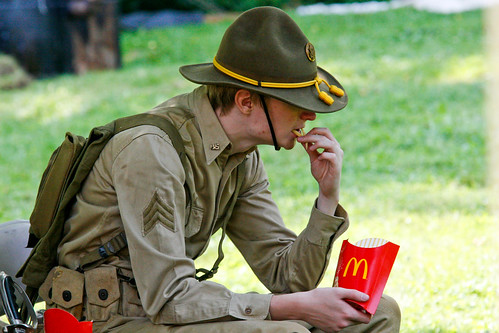Today is the 150th anniversary of the firing on Fort Sumter, so I decided to do a post with a bit of historical information not available anywhere else. Governor Francis Wilkinson Pickens was governor of South Carolina from 1860 to 1862. He presided over the secession of South Carolina and it's admission to the Confederate States of America.
Governor Pickens authorized the firing on Fort Sumter by SC militia, which is well known as the start of the Civil War, but he also authorized the first shot fired in the civil war when he sanctioned state militia artillery to fire on the Union vessel Star of the West 9 January, 1861 during its attempt to bring supplies to Major Anderson's blockaded garrison at Fort Sumter. His wife, Lucy Pickens witnessed the bombardment of Fort Sumter from atop a home in Charleston.
Governor Pickens was a life-long politician and diplomat. He was Minister to England, a state representative several times and later a state senator. Under President James Buchannan, he served as minister to Russia from 1858 to 1860 where they became close friends with Czar Alexander II, who was the godfather of their child. Finally he was Governor of South Carolina during secession and the early part of the Civil War.
His wife, Lucy Pickens was a master socialite of the 19th century, captivating everybody, even the Czar of Russia. She was so well known in South Carolina and through America, her face appears on the South Carolina Confederate $100 dollar bill as well as a CSA $1,000 bond. She was the consummate southern bell and captivated everybody with her intelligence and charm.
This letter was written by Governor Pickens, with an official State of South Carolina letterhead frank to his wife on 4 July 1861. The letter is short and terse, very unlike typical communications of Victorian couples. I can only expect that Gov Pickens was distraught and upset. Perhaps she was in an area of the coast that was threatened by Union invasion and he feared her capture.
We have this letter for view here at South Coast Antiques and Gallery.
Both Francis Pickens and Lucy Pickens are interred at Willow Brook Cemetery, Edgefield, Edgefield County South Carolina, USA. Visit their grave sites by clicking on the links.
* Update 28 July 2015 *
A reader recently asked a question about the Lucy Pickens
letter and it got me reexamining the envelope, which had previously eluded
deciphering despite my familiarity with mid-19th century
documents. So, reinvigorated I went
online and pulled up a few other letters written by Gov Pickens from the exact
period for comparison and found that he had used runners to deliver letters in
some cases.
On the envelope, I could read “Xxxxfield” which did not
match anything I could think of at the time of the first post back in
2011.
But, now I also realized that
although his
estate
was called Edgewood, it was just outside of the town of
Edgefield,
in the county of Edgefield, where he built his mansion in 1829.
So relooking at “Xxxxfield”, I then
understood it was the small town Edgefield, the population of which in 1860 was
only 518.
His large estate and mansion
was just outside of town and known by everybody in town, cleared up any
uncertainty as to destination.
Next up was some additional instructions written in the
lower left hand part of the envelope. I
decided to use some comparisons of other Pickens letters in hopes of at least
getting a feeling for his handwriting by sampling.
By pulling up a contemporary letter sent by Gov Pickens to General
Beauregard, which was also hand-delivered, it indicated, “By Mr. Green” which
meant that this Mr. Green would take it to the general. It wasn’t a destination, it was a delivery
instruction.
Now since that I knew the letter to Lucy Pickens had to
travel a good distance and not by mail.
Scouring period railroad maps, I found no railroads ran by Edgefield
from Columbia, a distance of 57 miles, nor were there any convenient rivers
that would give an easy steamboat trip, so any travel would have to be by
road.
I then understood the marking read, “By next boy” with a
flourish at the end, just like the Gen Beauregard letter.
This letter would have to be hand carried
also, by coach or by rider over a long road.
This letter had no stamps and no cancellation, not even a
frank marking, which is
another reason why I think it was carried by courier – “By next boy”, e.g. by
the next runner to Edgefield.
------------------------------------------------
Mrs F. ??. Pickens
Edgefield
By next Boy
-----------------------------------------------
Now at least some of the mystery has cleared away, although
why Gov Pickens was so abrupt may never be known. The letter was dated the morning 4th of July 1862 so I
wonder of Lucy was supposed to attend a party that night in Columbia. If so, she probably didn’t make it. What a shame, Lucy Pickens was one of the
great luminaries of the south and her attendance at a party would have made it
sparkle.
Now don’t think that the Confederates didn’t venerate the
Founding Fathers, they did.
In fact,
the first few years of The United States of America, the United States was
unified and operated under the
Articles of
Confederation.
Eventually the
Articles were replaced and the new US Constitution was ratified on June 21,
1788.
Yes, the USA was a confederacy
originally and yes, they broke away from “the rightful government of
Britain”.
So the government and states
of the CSA had every reason to observe celebrate the original American
Revolution.
But that’s another story
for another time.
I’d like to thank the reader for reminding me of unfinished
business with the Lucy Pickens letter as it led me to reread and rediscover its
destination. Sometimes a little time
must pass for the dust to settle and the handwriting becomes clearer.






















